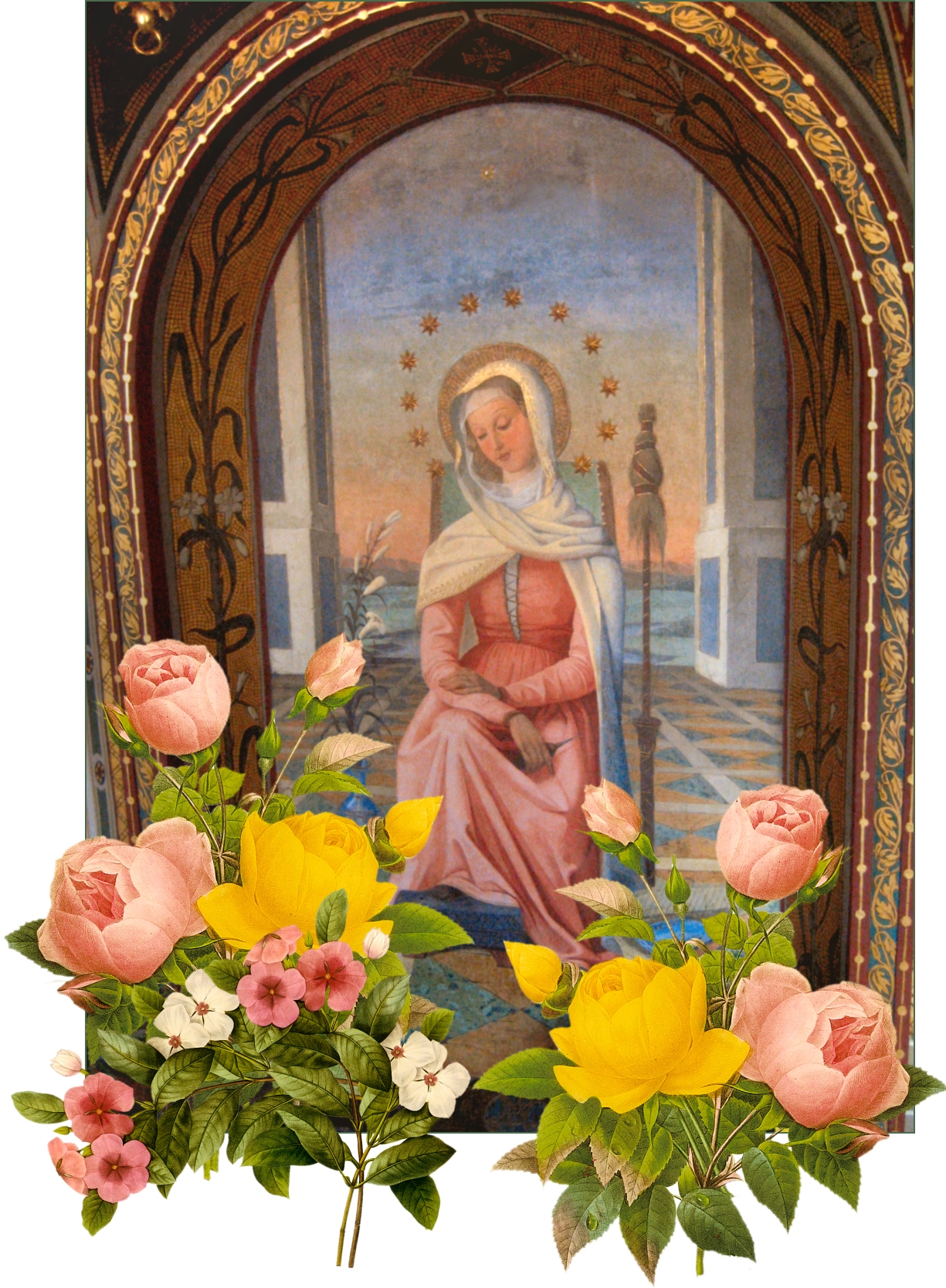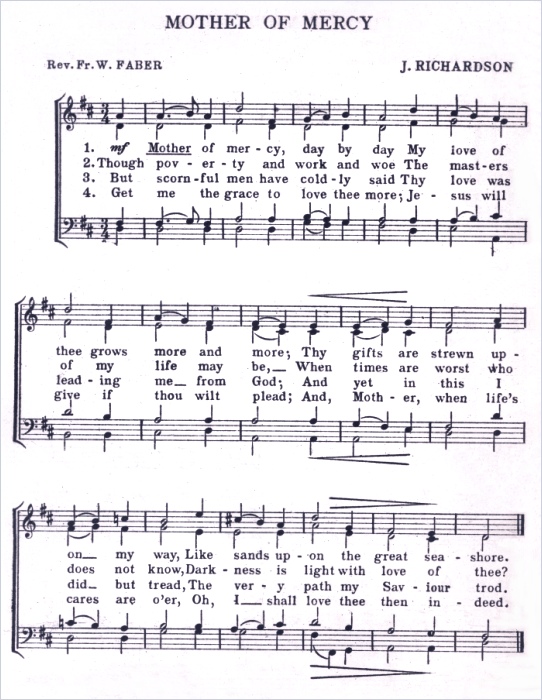  LISTEN TO THE MATER ADMIRABILIS MIDI LISTEN TO THE MIDI VITORRIA AVE MARIA Thou Hast Many Portraits Thou hast many portraits, Mother, All of them are dear to us, But our girlhood chiefly loves thee In our girlhood's beauty thus; And thy sweetest title this, And thy sweetest title this. Mater Admirabilis, Mater Admirabilis! Near thee blooms the spotless lily Emblem of thy brightest grace, And thy sinless soul is shining In thy modest downcast face. Make us like to thee in this, Make us like to thee in this. Mater Admirabilis, Mater Admirabilis! Open book and distaff tell us Thou hast labored too as we---- Let our hand and mind, sweet Mother, Work for Jesus and for thee. Make us thine and therefore His, Make us thine and therefore His. Mater Admirabilis, Mater Admirabilis! S.N.D.  ABOUT THE ABOVE MIRACULOUS IMAGE: This is the original image of Mater Admirabilis. This painting was executed in 1844 by a young French girl, Pauline Perdrau, who later became a religious. She was a student at the school of the Sacred Heart formed at the behest of Pope Leo XIII. Pauline asked Mother de Coriolis, the superior, permission to paint a fresco of Our Lady in a niche of the corridor that surrounded the cloister. She worked for almost 7 hours each day, taking thirteen hours for the face alone. When she had finished it was thought that the colors were too vivid, so the fresco was covered with a drape to dry for a few days. When the cloth was lifted, the image was in the colors you see above, somewhat muted, which is hard to scan as one cannot sharpen the image without disturbing the color. Our lady must have wanted this color for her image here. In fact, Pauline said she thought it a miracle and that Our Lady was giving her a sign of prayers that were answered. You see, Pauline was not a gifted artist, but a simple devotee of the Mother of God. She believed that when the painting was dry the face of Our Lady was more beautiful and serene than the one she had tried to paint. In this fresco Our Lady has a lily in a vase to her right, symbol of her immaculate purity and a distaff on her left with a spindle in her hand, a simple home scene of utter beauty because it is understated. Note the books in the basket by her footstool. Books are one of the symbols for the Mother of God. The Holy Virgin is often depicted holding a book when the Archangel Gabriel appears to her in Nazareth. And, she is the Queen of Heaven surrounded by twelve stars. The original title of the painting was the Madonna of the Lily. It was changed on October 20, 1846 when Bl. Pope Pius IX visited the school. As he stood before the fresco, he exclaimed, "Mater Admirabilis," and the title has remained thus ever since. We have written about the miracle of the paint itself, but this exquisite portrait is much more miraculous than this! The same year that the Pontiff came to view Our Lady's portrait, many miracles happened that were attributed to the painting For instance, a missionary priest of the Congregation of the Holy Heart of Mary, who had lost his voice due to some illness, the loss deemed permanent, came and had his power of speech restored, essential for a missionary and a priest. Because so many other miracles followed upon this one, Holy Mass was celebrated before the image with the blessing of Pius IX. He granted indulgences to those who went to pray there and October 20 was assigned as the Feast Day of Mater Admirabilis. Several Saints have made a pilgrimage to the painting, like one would t a shrine. Besides the Pontiff, now a Blessed, counted among this favored group are St. Madeleine Sophie Barat, St. John Bosco, St. Therese of Lisieux, Pope St. Pius X, St. Vincent Pallotti and Bl. Aloysius of Orione. Duplicate copies of the portrait are kept in the Convents of the Sacred Heart, one of which was prized by Sister Josefa Menendez. She wrote that on August 10, 1920 she "went into the Oratory of Mater Admirabilis to ask the Blessed Virgin's help in consoling her Son." When she arrived in the chapel, Jesus was waiting for her there, and drew her into His Heart where she could hear harmonies. Many graces have been granted through veneration of this image, especially the graces that assist the interior life. This miraculous painting is in the Institutio S. Cuore in the Piazza Trinita dei Monti, Rome. We are indebted to Helena for her suggestion, which we consider a work of God. Please note that the image of Our Lady of Schoenstatt also bears the title of Thrice Admirable Mother, sometimes shortened to Mater Admiralibis, although they are not connected.  Mother of Mercy Mother of Mercy, day by day My love of thee grows more and more; Thy gifts are strewn up on my way, Like sands upon the great seashore. Though poverty and work and woe The masters of my life may be, When times are worst, who does not know, Darkness is light with love of thee? But scornful men have coldly said Thy love was leading me from God; And yet in this I did but tread, The very path my Savior trod. Get me the grace to love thee more; Jesus will give if thou wilt plead; And, Mother, when life's cares are o'er, Oh, I shall love then indeed. REV. FR. W. FABER and J. RICHARDSON   Contact Us Contact Us HOME--------------MARY'S BOOK-------------MARY'S INDEX www.catholictradition.org/Mary/daily-sing2.htm |